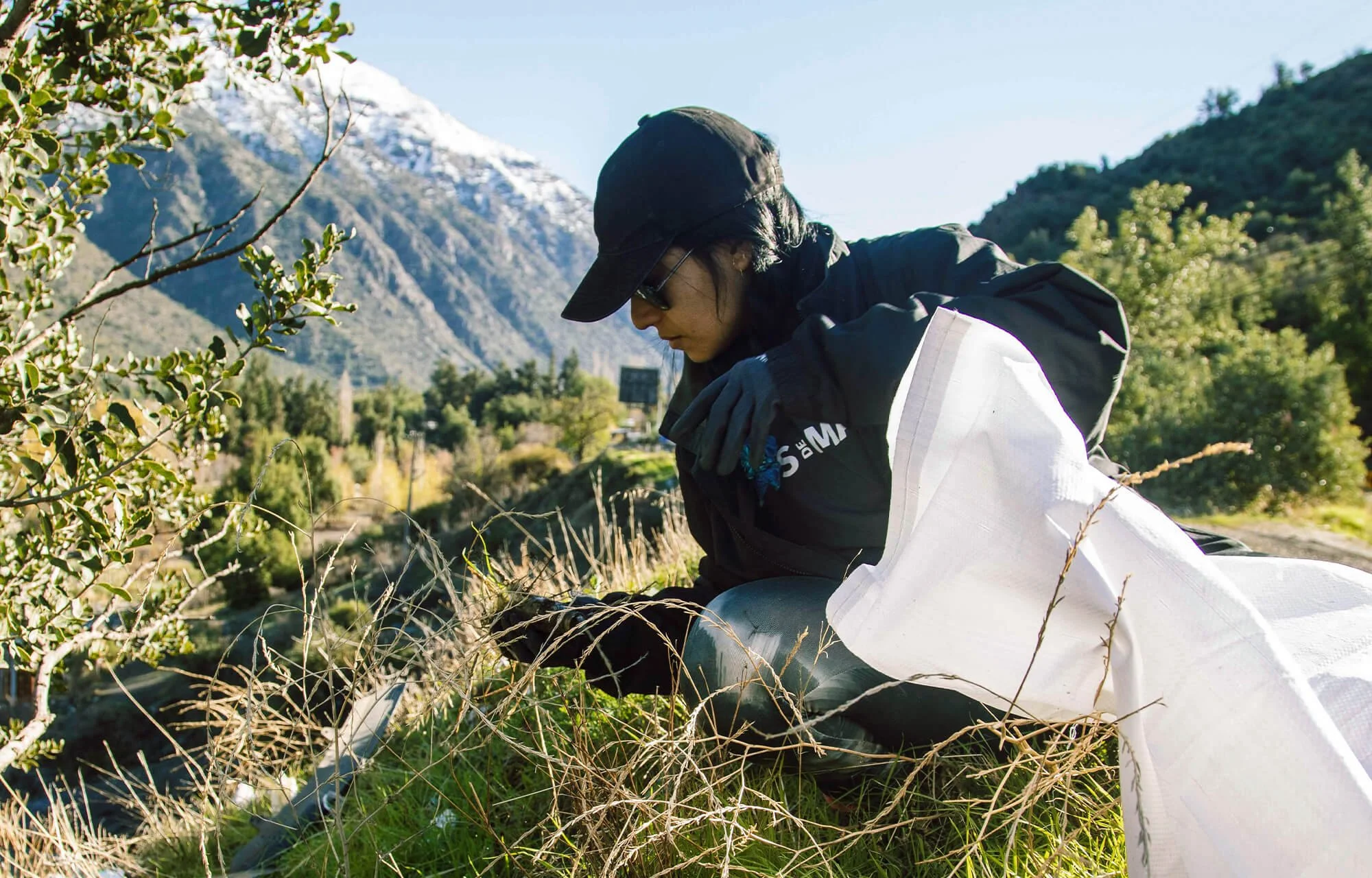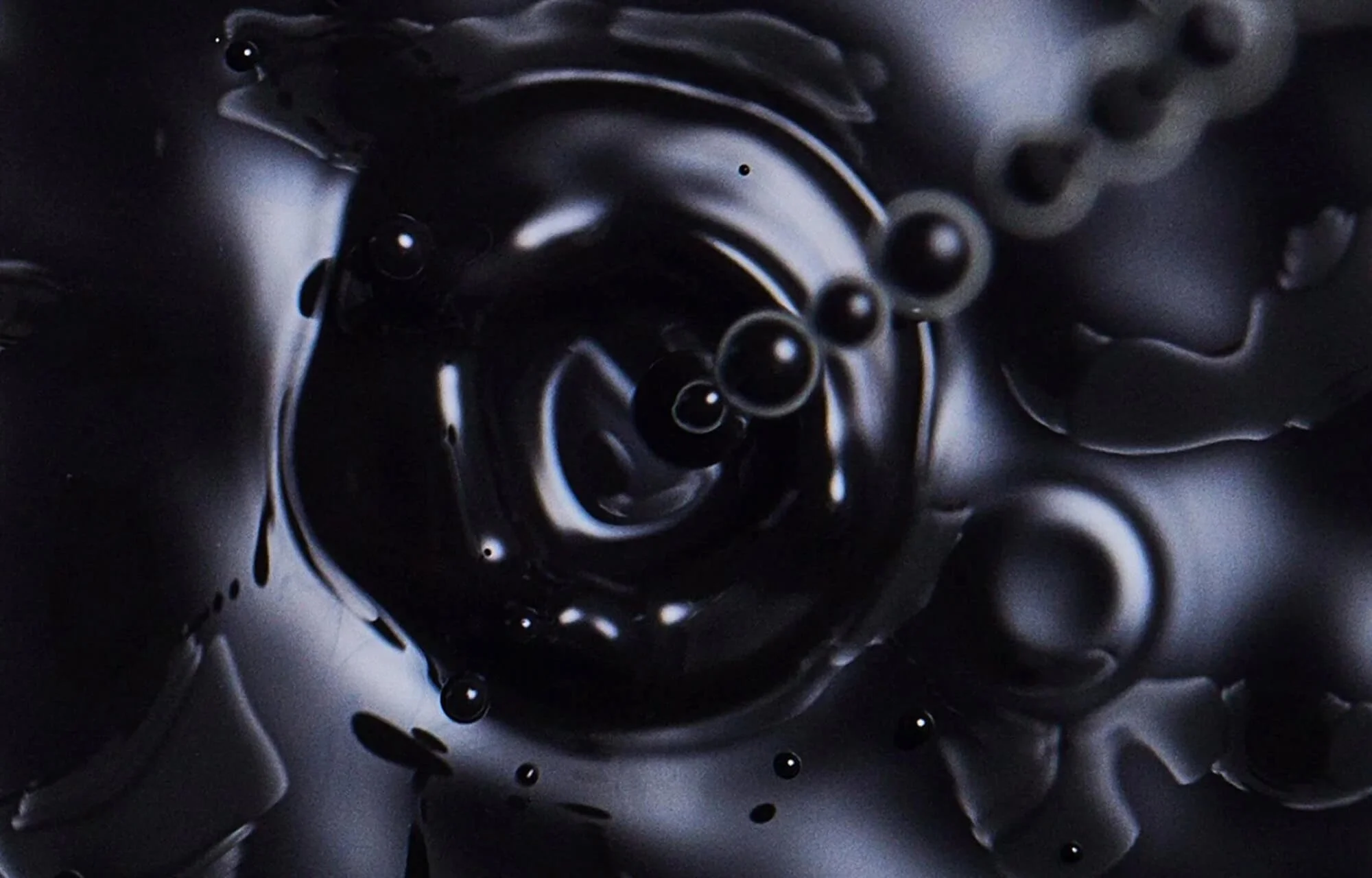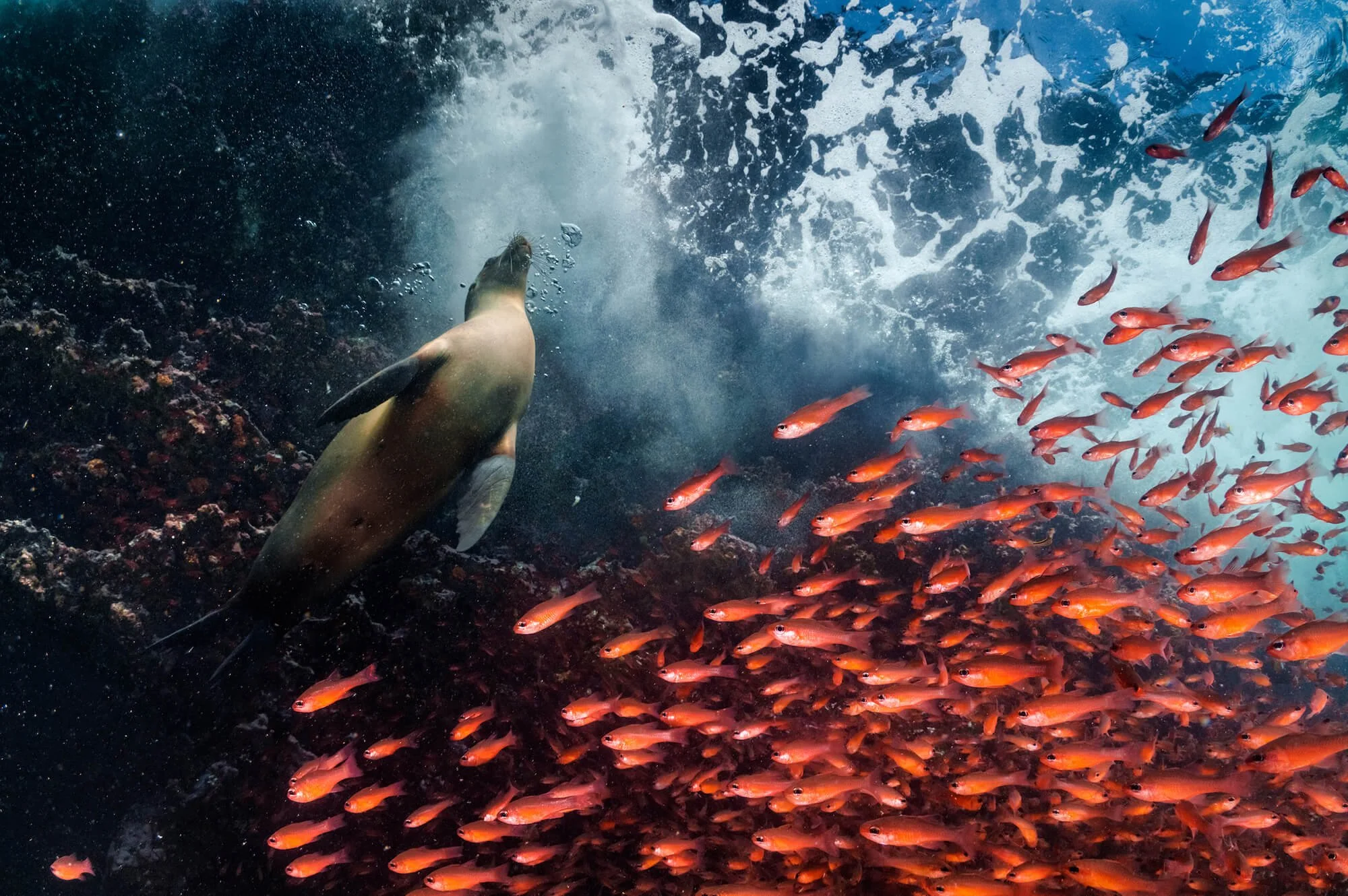Dr. Shanna Swan: Hormone-hacking chemicals, the fertility crisis and the forces of inertia
Leading environmental and reproductive epidemiologist Dr. Shanna Swan on her career investigating the health impacts of plastic chemicals, her viral findings on falling sperm counts and the importance of being skeptical
Dr. Shanna Swan with Parley Founder Cyrill Gutsch and filmmaker Louie Psihoyos at Metrograph during New York Climate Week
Earth is home to more people than ever before, with 8 billion of us and counting, but the global total fertility rate has more than halved since 1950. Birth rate declines are driven by a range of variables. There are obvious socioeconomic factors, such as increased access to contraception and education, the cost of living and shifting societal norms around family planning. But there is also the colossal, compounding issue of the environment. In modern life, we are exposed to more chemicals than at any other point in human history. Endocrine-disrupting chemicals lurk everywhere, including in trusted items used every day without much thought. These chemicals have been linked to falling sperm counts, reproductive disruptions and health issues in males, females and across non-human animal species.
Scientists say that humanity has breached the safe operating threshold for the planetary boundary of ‘Novel Entities’. We’ve made too much toxic stuff—including plastics and chemicals—in a very short period of time, pushing the planet, and survival, into the danger zone. Micro-and nanoplastics have been found in human placentas, semen, amniotic fluid and breastmilk. Study after study confirms the chemicals in common plastics—such as phthalates, bisphenols (e.g. BPA), and PFAS—hack our hormones from as early as the womb, with intergenerational impacts on health and fertility.
Dr. Shanna Swan, a leading environmental and reproductive epidemiologist, has spent decades researching environmental health impacts, publishing more than 200 scientific papers. In 2017, she co-published a study finding a 50% decline in sperm count in men in Western countries across just 50 years—a shocking discovery that changed the narrative. That viral report, followed by her 2021 book Count Down, has landed her in dozens of media outlets and podcasts, from Joe Rogan to The Huberman Effect.
On stage at Parley Talks held at Metrograph during NY Climate Week, and again on Parley’s Waves of Change Panel at the International Ocean Film Festival, Dr. Swan laid out the urgency of the fertility threat and the opportunity we all have to do something about it. With the Global Plastics Treaty negotiations set to resume in August, we caught up with Dr. Swan about the tenacity required to build a career questioning the impacts of ‘everywhere’ products (from fertilizers to petrochemicals), what she wants the public to understand about sneaky hormone hackers, and why individual interventions are entirely worth not just the effort, but the awkwardness of daring to talk about it.
Words by Mary Grygiel. Q&A edited for clarity and length.
Count Down (2021) by Dr. Shanna H. Swan, with Stacey Colino.
Q&A
In your studies and in Count Down, you unpack some scary findings. Global fertility declined 50% in just 50 years. Sperm and testosterone levels are falling. Environmental pollutants are changing reproductive anatomy. By 2045, most couples may need reproductive assistance technology like IVF to conceive. As an environmental and reproductive researcher, what is it that you want people to understand about plastic chemicals and fertility?
The chemicals that I'm most concerned about are the chemicals that alter our hormones… and it’s a lot of chemicals. We have up to 80 hormones, depending on how you count them. I’m especially concerned with those that affect reproduction, referred to as steroid hormones—testosterone, estrogen, progesterone, Anti-Müllerian Hormone (AMH, an indicator of a woman’s ovarian reserve)—hormones that are affected by environmental chemicals. Most of my attention is on the phthalates, which lower testosterone, and the bisphenols, which mimic estrogen.
What we have to understand is that these chemicals are like stealth fighters. They come in under the radar, invade our bodies and harm quietly and persistently. Keeping them out is difficult because they enter through every means possible and we’re not aware. We get them in our food or drink: ingestion. We get them through our nose: inhalation. Think about hairspray, nail polish, chemical plasticizers that are in personal care products, what we apply to our skin: dermal absorption. They even get in through hypodermic needles. Anything that penetrates your body can introduce these chemicals. They are coming in all the time.
“These chemicals are like stealth fighters. They come in under the radar. We're not aware of them. They invade our bodies and they harm quietly and persistently.”
Dr. Shanna Swan
The ‘crybabies’: Louis Guillette, Dr. Shanna Swan, Dr. Ana Soto, and Frederick S. vom Saal.
The team of scientists proudly put their reputation on a t-shirt.
In your lifetime, you’ve witnessed the proliferation of plastics in society and into the environment. Was there an ‘aha moment’ when you started to question plastics personally?
I didn't have one ‘aha moment’ about plastics. I guess it came when I started talking to others about this class of chemicals, endocrine disrupting chemicals (EDCs), on a committee in Washington, with the National Academy of Sciences. We were tasked with answering the question, are these chemicals harmful to human health? That was in the mid-1990s, and it was controversial. The panel was divided. There were people who said, yes, these things are harmful to our health, and those who said, no, they are not — those tended to be industry reps. And then there were people in the middle who were undecided. I was in the middle, because I didn't actually know what they were—I hadn't studied EDCs as a class of chemicals, although I had worked on other environmental causes of reproductive harm.
How did you come to make hormone hackers your focus?
I got interested when I realized how controversial it was. The sectors in the committee were divided by business versus academics, I sided with the academics. Our group was later called the Endocrine Disruptor Crybabies, named by Steve Milloy on the JunkScience website. We were kind of proud of that, I even had some t-shirts made with a baby and a bottle. The ‘crybabies’ in that group are eminent scientists today. Frederick S. vom Saal, a toxicologist at the University of Missouri (MU), and the late Louis Guillette—he studied alligators in a polluted lake and showed that their reproductive function was impaired, including having smaller penises. To do that, he had to go into the lake, at night, catch the alligators, bring them back to the lab and measure them. He was an amazing scientist. And we had Dr. Ana Soto, who was the first to identify the hormonal disrupting properties in nonylphenol (in her lab equipment). We were troublemakers.
After the committee, I was fired up and wanted to know how we could learn more. Working for the Department of Health in California, I wrote a budget change proposal to start a program that would research these chemicals. My supervisor wrote back, “this does not get my engine going.” I could either give up or go somewhere else, and I'm not a person to just give up. I spoke with Fred vom Saal and he said, “Come to Missouri and we will make trouble together.” So I did. I left the health department and Fred identified a position in Family and Community Medicine at Missouri—my first academic appointment.
I love the Einstein quote you share in the intro to Count Down: “Blind belief in authority is the greatest enemy of truth.” As someone who was initially unsure about EDCs, what made you want to dig deeper?
One of the things that had happened on the committee was we considered a study that had come out a few years before our first meeting, a 1992 study out of Denmark which reported that sperm count had declined 50% in 50 years. As the only statistician in the group, I was asked to look and see whether it's something that the committee needed to consider in deliberations. I took up the challenge, recruited some colleagues at the Department of Health, and we dove in, retrieving all 61 studies that had gone into the analysis. For each, I looked at things that might explain a decline. How was the sperm counted? What was the age of the men? Sperm count goes down with age. What was the BMI? Sperm count goes down with obesity, and so on. We made this huge database—well, 61 studies with lots of variables—and then reanalyzed the data controlling for all of those things. Nothing had changed. None of those factors accounted for the decline. So, what else could go wrong? Did the person who retrieved those 61 studies have some bias? I decided to start all over again. I went back to the literature, I retrieved not 61, but 101 publications. I went forward in time, back in time, and I did it all again. It took me almost a year. When I was done and published my findings, we saw that the slope had not changed at all.
I'm always kind of skeptical, and then I test. That's the way I work. Well, what could cause this sperm decline? The first thing I looked at was genetics, but this is across 50 years, two generations, too fast for genetic change. Then I thought, is it the environment? I decided to answer that question with another study. I wrote a grant to NIH to look at sperm count in four different environments in the United States, but to do everything carefully: measure exactly the same way using the same equipment, have the people that do the counting trained centrally, have men recruited in the same way, through the same kind of clinic. In other words, I did a replicated experiment in four places across the United States, and the results were startling.
What we found was that the number of moving sperm in samples from men in central Missouri was one half that of men in urban Minneapolis. That is huge. We’d been so careful in our experiments, we knew it was not due to other variables. I wondered, what's different about Missouri and urban Minnesota? Agriculture. I got a bit of funding from the EPA to look at samples of men and test them for pesticides. And we found four pesticides that were strongly related to sperm quality. That was the first paper that definitively showed that the environment was important for sperm decline. And this is just one set of chemicals that was implicated. By then, I was very firmly ensconced in this question of environmental impacts. So, you asked, was there an aha moment? I wouldn't say there was one. There were many.
“I think the forces of inertia are so strong because people don't want to change their habits... there's a comfort in sticking to your daily routine, even if it might convey harm. to move off of that, you have to have very strong evidence that this action will actually result in change with high probability.”
Dr. Shanna Swan
Fertility is often examined through the lens of women’s health. Your research looks at the impact of EDCs in utero, but specifically also on the changes to male reproductive anatomy. Miscarriages are increasing, at the same time, sperm and testosterone levels are falling—disturbingly, at the same pace, by about 1% per year. Since talking about the threat to sperm and fertility, have you noticed a shift in the public’s response? Do you think people are more receptive, or still in denial?
Well, when you say people, that's complicated. Industry, the companies that make these plastics, are happy to go on making them. That's what they promised their shareholders. That’s their business, it’s what they do. They continue to deny these things, they say we need more studies. Or the results are confounded; there are not enough numbers. That's just not true. There are enough studies now for us to take action, and there have been for quite a while. I don't know what could make it more in your face.
Looking at the declines in fertility, testosterone, I want to point out that the dramatic fertility decline, at 1% per year, is also the decline in species survival. Species survival rates in the wild are also declining, in some observed species (like dogs) at the rate of 1% per year. Skeptics who are not going to embrace the chemical answer to this reproductive problem, not going to recognize the role of plasticizers and other EDCs, they’ll say, hey, couples don't want to have children, they're doing something else, they want to put their money elsewhere, they’re delaying childbearing… I love to have the animal data in my back pocket then, because I can turn to them and say, these non-human species are not choosing to delay their childbearing. They're not choosing to go on contraception, etc. They have the same exposures that we do. There have been many studies showing that species all over the world, even in remote places, are exposed to the same chemicals. So here we are, humans and non-human species, same exposure, fertility is declining. Why would it not be for the same reason?
It’s frightening. Most people do agree we need to curb plastic pollution. Memes about microplastics have become culturally relevant. The problem, though, is action. The issue feels too big, our roles in it too small to matter without policy change. Do you sense a shift as public awareness mounts, specifically with these studies on hormones and fertility? Do people finally care enough to change?
I hope it's starting to shift, but I am not sure. I mean, the plastics treaty is in its last round of negotiations, and it's not likely that there's going to be an agreement. So, I can't predict that. Of course, I can keep hoping there will be, but I think the forces of inertia, if you will, for not bringing change, are so strong because people don't want to change their habits. They don't want to change what they do. They're busy, they're stressed, they're doing what they're doing… there's a comfort in sticking to your daily routine, even if it might convey harm. And to move off of that, you have to have very strong evidence that this action will actually result in change with high probability.
We need to make those specific connections. That's what I'm trying to do. I've stopped doing the large studies I've done for 20 years. They've been successful, funded, published, and they've even influenced some legislation. But I would say most people, no, they don't care.
When I met you in NY, I asked what are quick actions to protect myself and my family. You told me never to heat food in plastic and to avoid touching BPA-coated receipts. No one can totally eliminate their exposure to forever chemicals and everywhere plastics down to zero, plus, your neonatal research shows we are born with this synthetic burden. So, why are the small steps worth it?
People can reduce their personal exposure, and you can do that on faith, or you can do it by testing your urine. That’s what we’re doing through the Action Science Initiative with the Million Marker Institute. Our first ‘rapid intervention’ was on couples who are infertile. We collected samples from families and they sent in their urine, allowing us to measure phthalates, BPA, paraben levels in their bodies. Next, an educational team got on the phone with them and said, okay, show me, what did you put on your face today? What do you clean your counters with? What do you wash your laundry with? How do you store your food, what kind of utensils do you use? And on the basis of their answers and the chemicals in their urine, the educators could say to them, okay, we're going to help you change, reduce your exposure by changing your product use. Then I went into their homes, all over the US. I brought each a big box of alternatives—to store food, do laundry, etc. We gave them the cleaner products, and when we measured their urine, again, chemical levels were way down. When they looked at their reproductive parameters, they were much better.
So, there is a measurable difference after small lifestyle changes.
If you make these changes, yes, your body will change and your health will change. That may take a little longer to see, depending on what health outcome you want to measure. One example that people are not very aware of is that most of our clothing and our upholstery and our towels and our sheets are coated with PFAS… fabrics in our home and on our bodies are poisoning us. And so we know now, for example, this has been shown in multiple studies, when people have more PFAS, they're less able to resist disease. Their antibody levels go down. In fact, if you give them a shot, a vaccination, their antibody response to that vaccination is impaired.
It's not hard to see that changing exposure changes your health, but people have to make that effort to go out and get different products, and to learn: What do I have to change? How do I know I'm getting better? We are focusing on reproduction because that's my expertise. But there are many other issues than reproductive endpoints, for example, asthma and immune responses.
How has the response been in these families who participate?
It’s certainly possible to convince people. I think if they sort of stop for a minute and say, take a breath. Okay, let's make these changes and see if they matter. Our couples that went through the first intervention were totally blown away and totally on board, and they're talking to their friends and they're talking to their families. They are convinced and they're becoming ambassadors for this message. That’s what we need.
Count Down has been likened to Silent Spring—a warning to question the industrialization of nature and the chemicals that show up in our lives. Baby toys and bottles, the food in the grocery store, this keyboard at my fingertips now, it's all plastic. We just accept it. People weren't questioning the spraying of DDT initially, and this book helped ban its use and form the EPA. Maybe we’re worse off now, but we have these plastic studies and the example from people like you and Rachel Carson and the Endocrine-Disrupting Crybabies, that you can find a niche and dig in and actually achieve change. Do you think we’re in a better place?
There was DDT. Now, it’s plastics. Is that an improvement? I don't think so. We’ve switched the enemy, if you will, but I don't think we're safer. I think we're less safe, actually. You've seen the graphs of the rate at which plastics are produced. So, yeah, I'm concerned. I have a lot of children and grandchildren, and I don't like to think about leaving this for them, and the fact that they're already exposed, they've been exposed in the womb and in their early life… It's tragic.
I think about this constantly, all the time, as a mother and especially in my current pregnancy. I don't want to ask what gives you hope, because maybe that's too complicated a word and the problem honestly feels at times somewhat hopeless. So, instead, at 89, what keeps you going?
I can't not do this. I can't see harm and not try to do something about it. That's just the way I am and how I was raised. I can't stop asking questions, because as I mentioned, I'm always skeptical. That's how I approach things. But it's getting harder. One of the things that encourages me, in a weird way, is that we have more technology. The human race is brilliant in a lot of ways. When people say, do you think humans are going to die out? I don't think we are. I think we're going to figure out these alternatives for reproduction, but I don't know at what cost. It will take generations for us to answer the unknowns, and by then we’ll be facing a whole new set of problems. I have to keep doing my part because I have no alternative. My hope is that people like you and all the fantastic people working on the plastic treaty, the nonprofits, the people devoting their lives to educating people and reducing exposure, maybe together we've made some progress.
When we talked in New York and I said don't handle receipts or heat food in plastic, I should have also said: and tell other people. I make a big nuisance of myself. I'll go to a store and the cashier will say, do you want a receipt? No, send that to me electronically and don't touch it yourself. I will give a little lecture. Or a waiter will come and give me a plastic glass or bottle, and I'll say, thanks, but do you know… I won't stop. I do this all the time. I think if more people did that, even if it’s annoying, people would begin to listen and question for themselves.
From an endocrine-disruptor crybaby: Be annoying.
Maybe we should put that on a t-shirt.





















